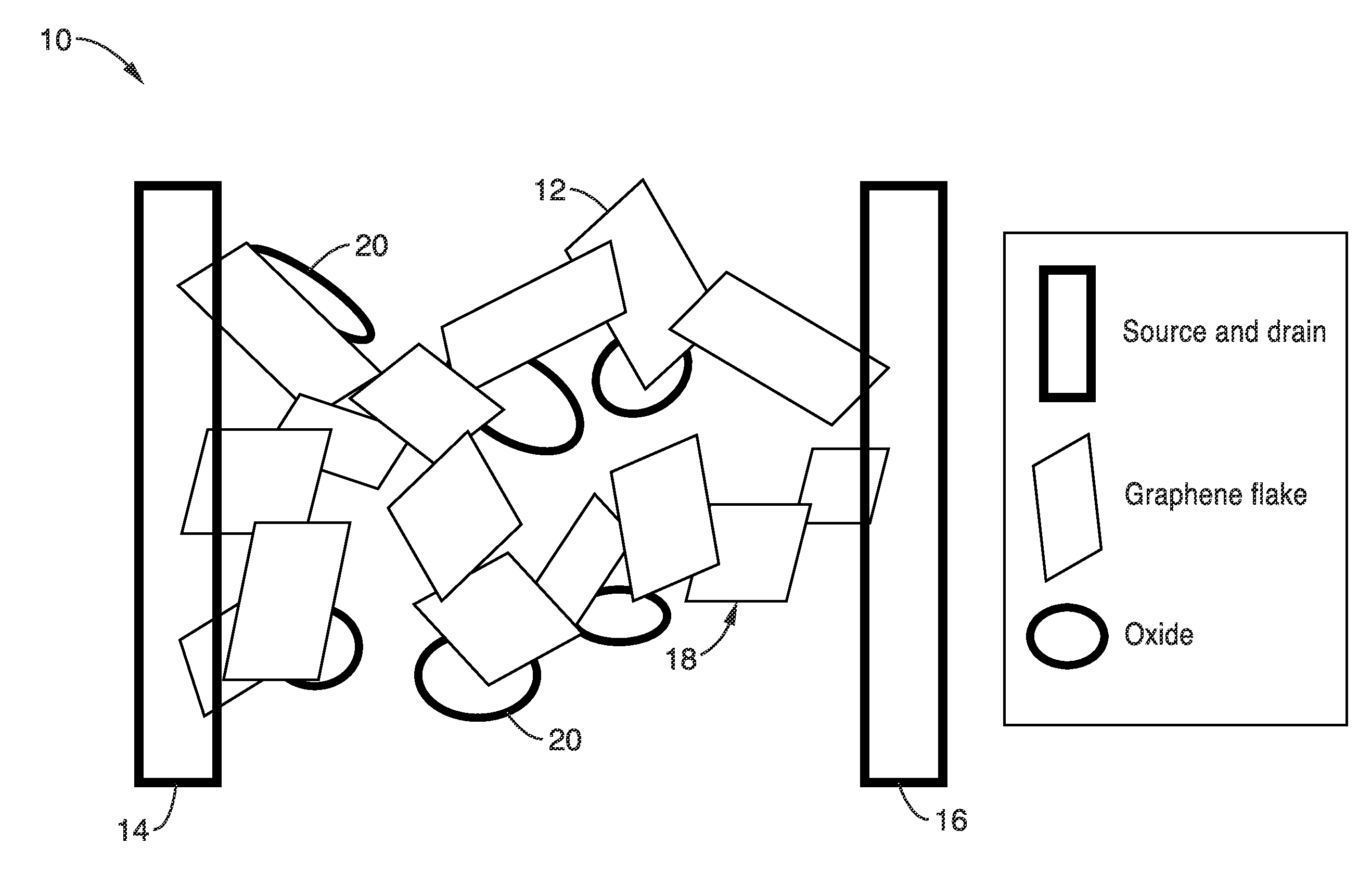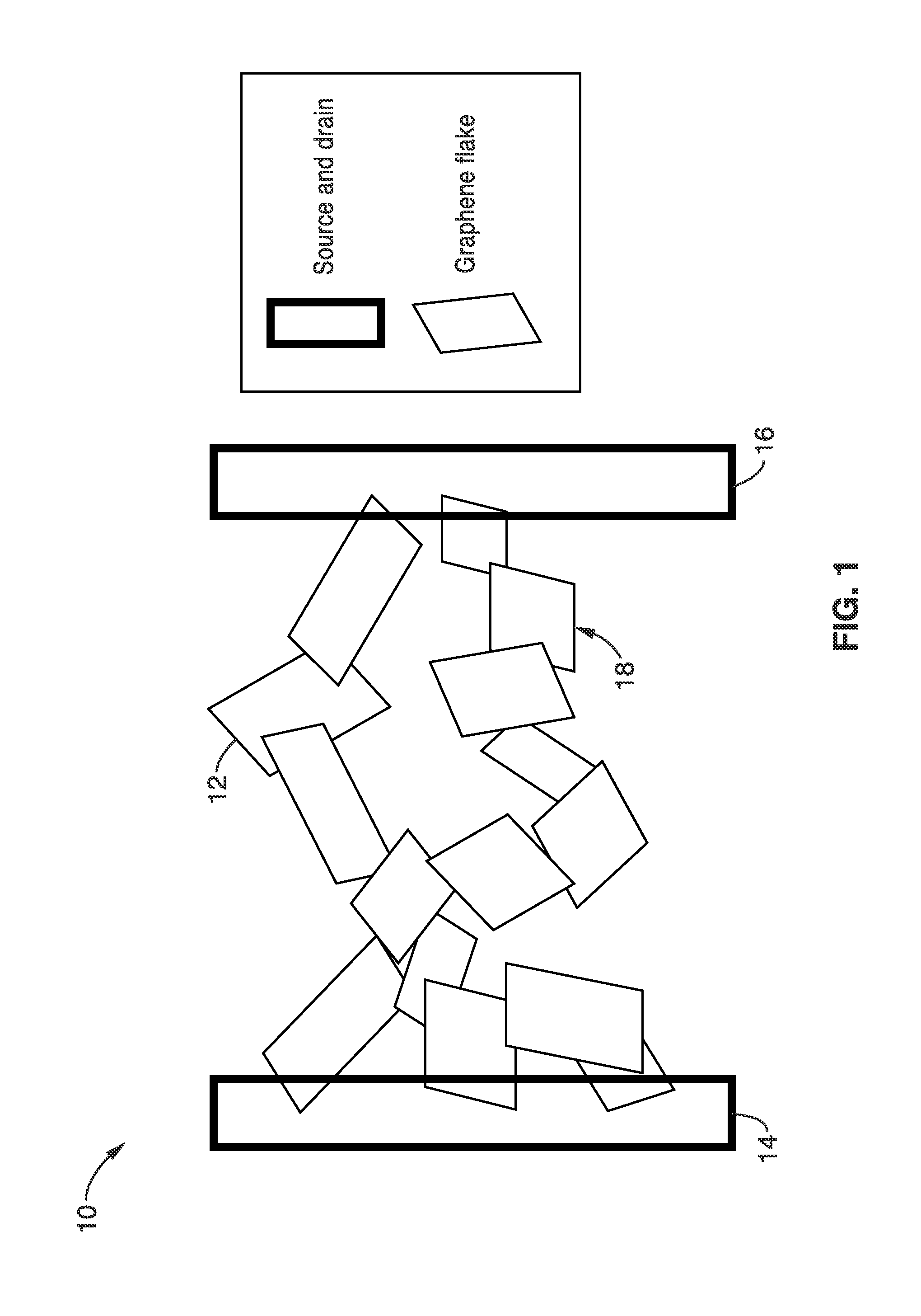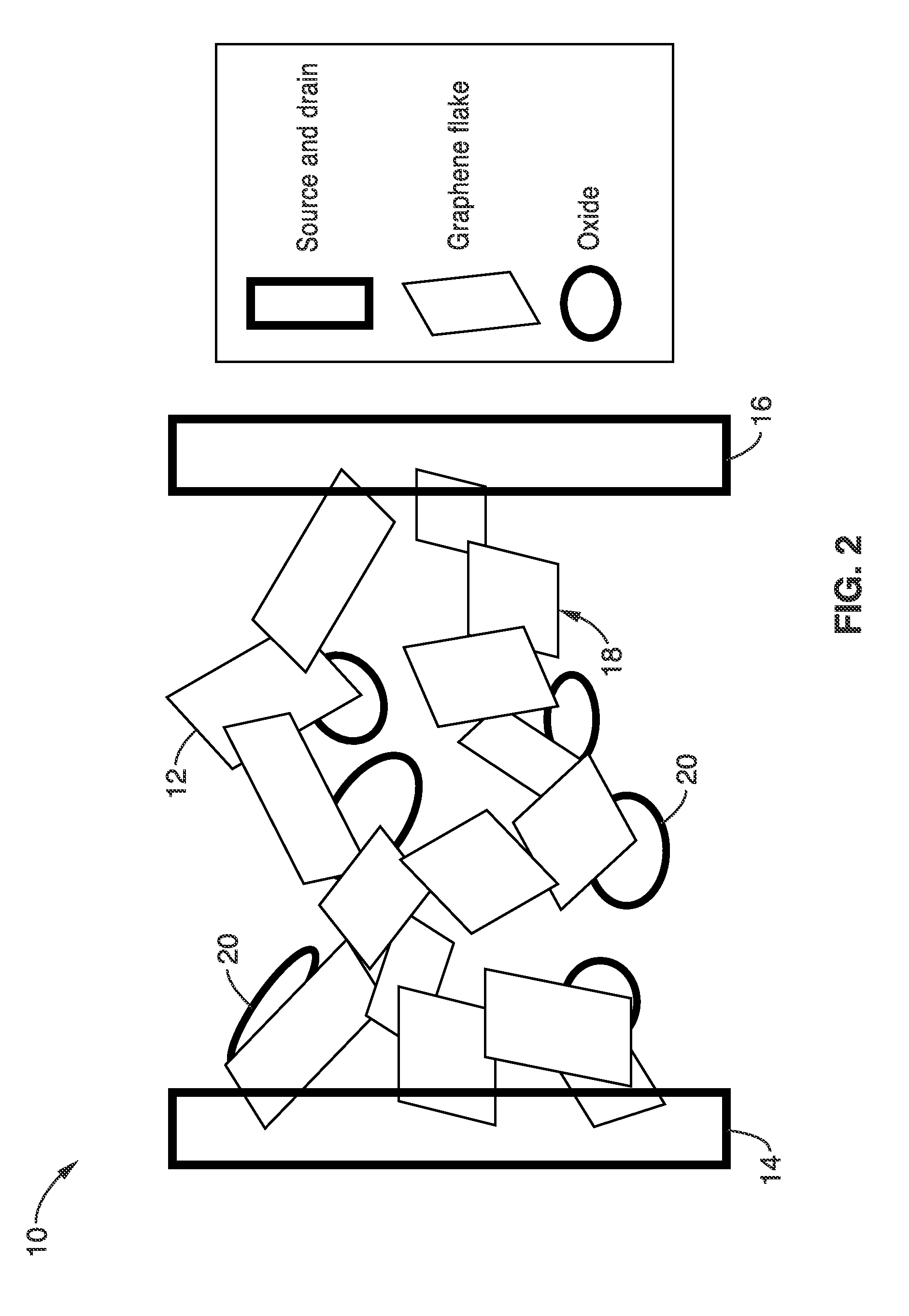Interpenetrating networks of carbon nanostructures and nano-scale electroactive materials
- Summary
- Abstract
- Description
- Claims
- Application Information
AI Technical Summary
Benefits of technology
Problems solved by technology
Method used
Image
Examples
example 1
[0074]In order to demonstrate the functionality of various interpenetrating network films, three different fabrication methods for fabricating interpenetrating networks of graphene flakes and other nano-scale materials were used and the products were evaluated. The first method co-deposited graphene flakes and the nano-scale material using different dispersants for the two species. Each species was dispersed in separate solvents, sonicated to achieve appropriate dispersion, and sprayed using a nozzle that deposits both materials at the same time. Changing the concentration of the materials, and changing the deposition rate will lead to a different concentration of the material species in the composite films.
[0075]In one example, oxide nanoparticles were mixed with carbon graphene flakes and polyvinylidene fluoride (PVDF) binder in N-methyl-2-pyrrolidone to create a slurry. A stainless steel sheet was cut into an appropriate length and width and the slurry was painted onto the stainl...
example 2
[0079]To illustrate networks of oxide nanosheets, TiO2 nanosheets were prepared and evaluated. TiO2 nanosheets were produced by a simple hydrothermal route using tetrabutyl titanate, Ti(OBu)4, as a source and hydrofluoric acid solution as the solvent. The two were mixed in an autoclave at high temperature, above 180° C. After cooling to room temperature, centrifugation was used to separate the product, followed by washing ethanol and water. The TiO2 nanosheets that were produced were stable and could be stored in ethanol for electrode processing.
[0080]Graphene flakes were then mixed with a polyvinylidene fluoride (PVDF) binder (5 wt. %) in N-methyl-2-pyrrolidone solvent. The mixture was then sonicated for 1 hour. The TiO2 nanosheets dispersed in ethanol were then added to the mixture and sonicated. The resulting slurry was drop cast onto a stainless steel current collector of an appropriate length and width. The electrode / current collector was placed into an oven to evaporate the so...
example 3
[0084]The functionality and performance of the electrodes with interpenetrating networks of graphene and materials with large electrochemical capacity for energy storage devices were evaluated. As described above, the electrodes take advantage of both the high conductivity of the graphene and the high specific capacitance of the oxides. The direct electrical contact between the two species ensures that the charges generated by the electrochemical reaction at the surface of the oxide materials will be transferred to the graphene network. Thus high energy density and high power density are ensured.
[0085]In one exemplary embodiment of the present invention, an asymmetric supercapacitor may be assembled with an anode comprising interpenetrating networks of carbon graphene and oxide nanoparticles and a cathode comprising interpenetrating networks of graphene and a carbonaceous material (e.g., activated carbon). It should be noted that one or both of the interpenetrating networks of graph...
PUM
 Login to View More
Login to View More Abstract
Description
Claims
Application Information
 Login to View More
Login to View More - R&D
- Intellectual Property
- Life Sciences
- Materials
- Tech Scout
- Unparalleled Data Quality
- Higher Quality Content
- 60% Fewer Hallucinations
Browse by: Latest US Patents, China's latest patents, Technical Efficacy Thesaurus, Application Domain, Technology Topic, Popular Technical Reports.
© 2025 PatSnap. All rights reserved.Legal|Privacy policy|Modern Slavery Act Transparency Statement|Sitemap|About US| Contact US: help@patsnap.com



